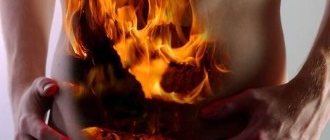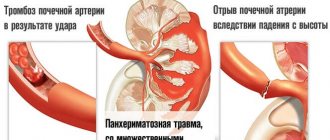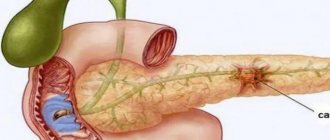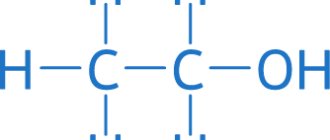Composition per film-coated tablet:
Active substance:
Domperidone - 10.0 mg
Excipients:
- lactose monohydrate - 48.44 mg,
- microcrystalline cellulose - 10.0 mg,
- povidone (low molecular weight polyvinylpyrrolidone) - 10.0 mg,
- glycerol (glycerin) - 0.56 mg,
- magnesium stearate - 1.0 mg,
- corn starch - to obtain a tablet without a shell weighing 100.0 mg
Excipients (coat):
Hypromellose - 1.74 mg, macrogol 6000-0.26 mg to obtain a film-coated tablet weighing 102.0 mg.
Reviews
This medicine has proven itself to be an effective drug. The remedy quickly relieves painful sensations in the abdomen, as well as poor gastric emptying. Some girls ignore doctors' recommendations and start taking the drug in late pregnancy. As a result, the girls' general condition worsens.
Negative reviews are usually associated with side effects, which for some were severe. As a result, the impression of the drug Motonium among patients was spoiled.
Description:
Round, biconvex tablets, white film-coated, with a white core in cross-section.
Pharmacotherapeutic group:
antiemetic dopamine receptor blocker central.
ATX Code:
A03FA03
pharmachologic effect
Pharmacodynamics
Blocks peripheral and central (in the trigger zone of the brain) dopamine receptors, eliminates the inhibitory effect of dopamine on the motor function of the gastrointestinal tract and increases the evacuation and motor activity of the stomach. Has an antiemetic effect, soothes hiccups and eliminates nausea. Increases the concentration of prolactin in the blood serum.
Pharmacokinetics
Absorption after oral administration on an empty stomach is rapid (taking after meals, reduced acidity of gastric juice slows down and reduces absorption). Time to reach maximum concentration (TCmax) - 1 hour. Bioavailability - 15% (first pass effect through the liver). Communication with plasma proteins - 90%. Penetrates various tissues and does not pass well through the blood-brain barrier. Metabolized in the liver and in the intestinal wall (by hydroxylation and N-dealkylation). 66% is excreted through the intestines, 33% by the kidneys, incl. unchanged - 10% and 1%, respectively. The half-life is 7-9 hours, and in cases of severe chronic renal failure it is extended.
Motonium
Motonium®
Trade name of the drug: Motonium®
International nonproprietary name:
domperidone
Dosage form:
film-coated tablets
Composition per film-coated tablet: Active substance: Domperidone - 10.0 mg Excipients: lactose monohydrate - 48.44 mg, microcrystalline cellulose - 10.0 mg, povidone (low molecular weight polyvinylpyrrolidone) - 10.0 mg, glycerol (glycerol) - 0.56 mg, magnesium stearate - 1.0 mg, corn starch - to obtain an uncoated tablet weighing 100.0 mg Excipients (coat): Hypromellose - 1.74 mg, macrogol 6000 - 0.26 mg to obtain a tablet with a film shell weighing 102.0 mg.
Description: round, biconvex tablets, white film-coated, with a white core in cross-section.
Pharmacotherapeutic group:
antiemetic dopamine receptor blocker central.
ATX code: A03FA03
Pharmacological action Pharmacodynamics. Blocks peripheral and central (in the trigger zone of the brain) dopamine receptors, eliminates the inhibitory effect of dopamine on the motor function of the gastrointestinal tract and increases the evacuation and motor activity of the stomach. Has an antiemetic effect, soothes hiccups and eliminates nausea. Increases the concentration of prolactin in the blood serum. Pharmacokinetics. Absorption after oral administration on an empty stomach is rapid (taking after meals, reduced acidity of gastric juice slows down and reduces absorption). Time to reach maximum concentration (TCmax) - 1 hour. Bioavailability - 15% (first pass effect through the liver). Communication with plasma proteins - 90%. Penetrates various tissues and does not pass well through the blood-brain barrier. Metabolized in the liver and in the intestinal wall (by hydroxylation and N-dealkylation). 66% is excreted through the intestines, 33% by the kidneys, incl. unchanged - 10% and 1%, respectively. The half-life is 7-9 hours, and in cases of severe chronic renal failure it is extended.
Indications for use
Vomiting and nausea of various origins (including against the background of functional and organic diseases, infections, toxemia, radiation therapy, diet disorders, medicinal origin - taking morphine, apomorphine, levodopa and bromocriptine, during endoscopic and radiopaque studies of the gastrointestinal tract), hiccups, atony of the gastrointestinal tract (including postoperative), the need to accelerate peristalsis when conducting X-ray contrast studies of the gastrointestinal tract. Dyspeptic disorders due to delayed gastric emptying, gastroesophageal reflux and esophagitis: a feeling of fullness in the epigastrium, a feeling of bloating, flatulence, gastralgia, belching, heartburn with or without reflux of gastric contents into the oral cavity.
Contraindications Hypersensitivity, bleeding from the gastrointestinal tract, mechanical intestinal obstruction, perforation of the stomach or intestines, prolactinoma, children (up to 5 years and children weighing up to 20 kg).
With caution: Renal and/or liver failure, lactation, pregnancy.
Use during pregnancy and lactation Use of the drug during pregnancy or breastfeeding is permitted if the expected benefit to the mother outweighs the potential risk to the fetus and child.
Directions for use and dosage: Orally, 30 minutes before meals. For adults and children over 5 years old with chronic dyspeptic symptoms - 10 mg 3-4 times a day and, if necessary, additionally before bedtime. For severe nausea and vomiting - 20 mg 3-4 times a day and before bedtime. For severe nausea and vomiting - 5 mg/10 kg 3-4 times a day and before bedtime. If necessary, the dose can be doubled. For patients with renal failure, dose adjustment is necessary; the frequency of administration should not exceed 1-2 times a day.
Side effects From the digestive system: transient intestinal spasms. From the nervous system: extrapyramidal disorders (in children and in persons with increased permeability of the blood-brain barrier). Allergic reactions: skin rash, urticaria. Other: hyperprolactinemia (galactorrhea, gynecomastia).
Overdose Symptoms: drowsiness, disorientation, extrapyramidal disorders (especially in children). Treatment: taking activated carbon, for extrapyramidal disorders - anticholinergic drugs, antiparkinsonian or antihistamine drugs with anticholinergic properties.
Interaction with other drugs Cimetidine, sodium bicarbonate reduce the bioavailability of domperidone. Anticholinergic drugs neutralize the effect of domperidone. Increase the concentration of domperidone in plasma: azole antifungal drugs, macrolide antibiotics, HIV protease inhibitors, nefazodone (antidepressant). Compatible with the use of antipsychotic drugs (neuroleptics), dopaminergic receptor agonists (bromocriptine, levodopa). Concomitant use with paracetamol and digoxin had no effect on the concentration of these drugs in the blood.
Information about the possible effect of the drug on the ability to drive vehicles and operate machinery. There is no separate data.
Release form Film-coated tablets 10 mg. 10 tablets per blister pack. 30 tablets per polymer jar. 1, 2, 3, 4 or 5 blister packs or a jar together with instructions for use are placed in a cardboard box.
Storage conditions: In a dry place, protected from light, at a temperature not exceeding 25°C. Keep out of the reach of children.
Shelf life: 2 years. Do not use after the expiration date stated on the package.
Conditions for dispensing from pharmacies:
on prescription.
Manufacturer/organization receiving claims: JSC AVVA RUS, Russia, 610044 Kirov, st. Luganskaya, 53A.
,
Indications for use
- Vomiting and nausea of various origins (including against the background of functional and organic diseases, infections, toxemia, radiation therapy, diet disorders, medicinal origin - taking morphine, apomorphine, levodopa and bromocriptine; during endoscopic and radiopaque studies of the gastrointestinal tract), hiccups, atony of the gastrointestinal tract (including postoperative); the need to accelerate peristalsis when conducting radiopaque studies of the gastrointestinal tract.
- Dyspeptic disorders due to delayed gastric emptying, gastroesophageal reflux and esophagitis: a feeling of fullness in the epigastrium, a feeling of bloating, flatulence, gastralgia, belching, heartburn with or without reflux of gastric contents into the oral cavity.
Analogs
Similar drugs can only be prescribed by a doctor or pharmacist.
The drug Motonium has a large number of analogues , among which are drugs such as Domet, Domstal, Motizhekt, Motilium, Passazhiks, Motilak, Damelium, Doiperidone, Motilak, Motinorm.
Did you know that the most common diseases of the 21st century are liver problems? More details:
- How to recognize the first signs of hepatitis and effectively cope with the disease?
- An interesting article about liver cirrhosis, you will learn about the history of the disease and its prevalence in the world.
- Pain or discomfort in the right hypochondrium? Perhaps it's hepatosis! How can it be cured?
Directions for use and doses
Inside, 30 minutes before meals.
For adults and children over 5 years old with chronic dyspeptic symptoms - 10 mg 3-4 times a day and, if necessary, additionally before bedtime. For severe nausea and vomiting - 20 mg 3-4 times a day and before bedtime.
For severe nausea and vomiting - 5 mg/10 kg 3-4 times a day and before bedtime. If necessary, the dose can be doubled. For patients with renal failure, dose adjustment is necessary; the frequency of administration should not exceed 1-2 times a day.
special instructions
Impact on the ability to control complex mechanisms and drive vehicles
Taking Motonium may be accompanied by side symptoms from the nervous system and brain function. During the treatment period, it is recommended to take precautions when operating complex or potentially dangerous mechanisms, as well as when driving a car.
Pregnancy and lactation
The medicine is as harmless as possible, effective, and fast-acting. The use of Motonium to relieve the gag reflex is permissible only in the first trimester of pregnancy. During lactation and at later stages of gestation, taking the medication is prohibited.
Use in childhood
Motonium is used in pediatrics for children from the age of five.
For liver dysfunction
The antiemetic is prohibited for use in severe and moderate liver failure. For other liver dysfunctions, it is not recommended to take the medication on your own.
For impaired renal function
Renal dysfunction is the basis for adjusting the Motonium dosage regimen. High doses of the drug can cause side effects.
Conditions for dispensing from pharmacies
You do not need a prescription to purchase antiemetics.
- See our article “The best folk remedy for gastritis!” To get rid of it QUICKLY and FOREVER...
- How to get rid of gases in the intestines and why do they occur?
- Activated carbon cleaning - is it worth starting?
Interaction with other drugs
Cimetidine and sodium bicarbonate reduce the bioavailability of domperidone. Anticholinergic drugs neutralize the effect of domperidone.
Increase the concentration of domperidone in plasma: azole antifungal drugs, macrolide antibiotics, HIV protease inhibitors, nefazodone (antidepressant). Compatible with the use of antipsychotic drugs (neuroleptics), dopaminergic receptor agonists (bromocriptine, levodopa).
Concomitant use with paracetamol and digoxin had no effect on the concentration of these drugs in the blood.
Information about the possible effect of the drug on the ability to drive vehicles and machinery
There is no separate data.
Side effects
As a result of taking the medication, patients may begin to experience side effects, which include:
- Anaphylactic shock;
- Agitation, as well as nervousness;
- Convulsions;
- Arrhythmia, coronary death, QT interval prolongation;
- Hives and swelling, skin rash;
- Urinary retention;
- Amenorrhea, galactorrhea, and gynecomastia.
In case of overdose
In case of overdose, disorientation and drowsiness are noted. Activated carbon is used as a treatment. If there are extrapyramidal reactions, then it is necessary to take antiparkinsonian, anticholinergic, and antihistamine drugs.
Contraindications
This medicine is contraindicated for use in conditions such as:
- Pituitary tumor;
- Allergy to any components of the drug;
- Bleeding from the stomach or intestines;
- In severe renal/liver failure.
With caution, this medicine can be prescribed for rhythm disturbances, heart failure, and cardiac conduction disorders.
During pregnancy
Motonium can be prescribed in the first trimester only if the benefits of taking the medication outweigh the risks to the fetus. To date, there have been no recorded cases of development of defects in children. At later stages, taking the drug is contraindicated.
In mother's breast milk, the content of domperidone is 4 times lower than in plasma. That is why it is not recommended to take this medicine during breastfeeding. If it is not possible to replace Motonium with another drug, then breastfeeding should be abandoned.
For diseases of the gastrointestinal tract, the doctor may prescribe the drug Motonium.









